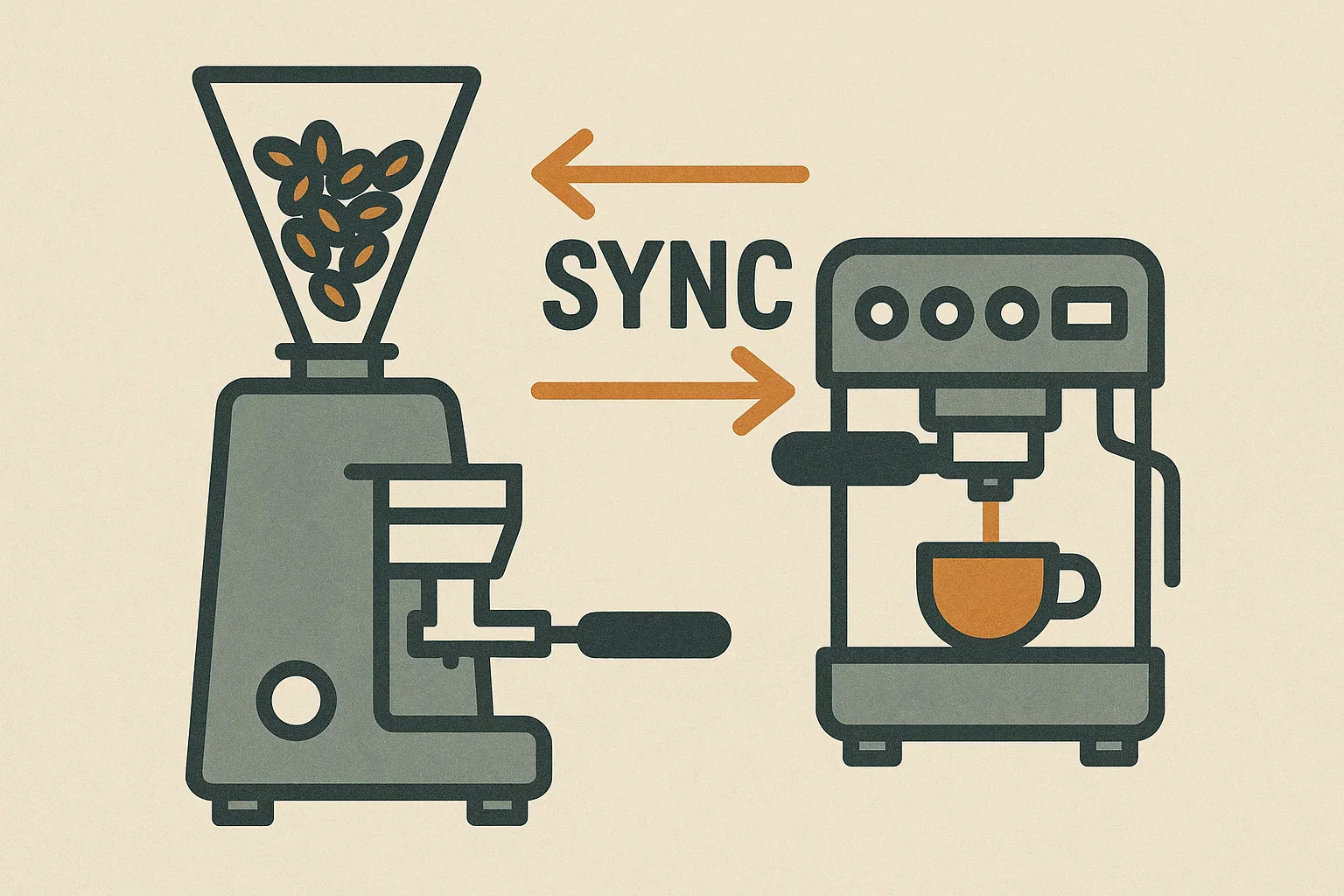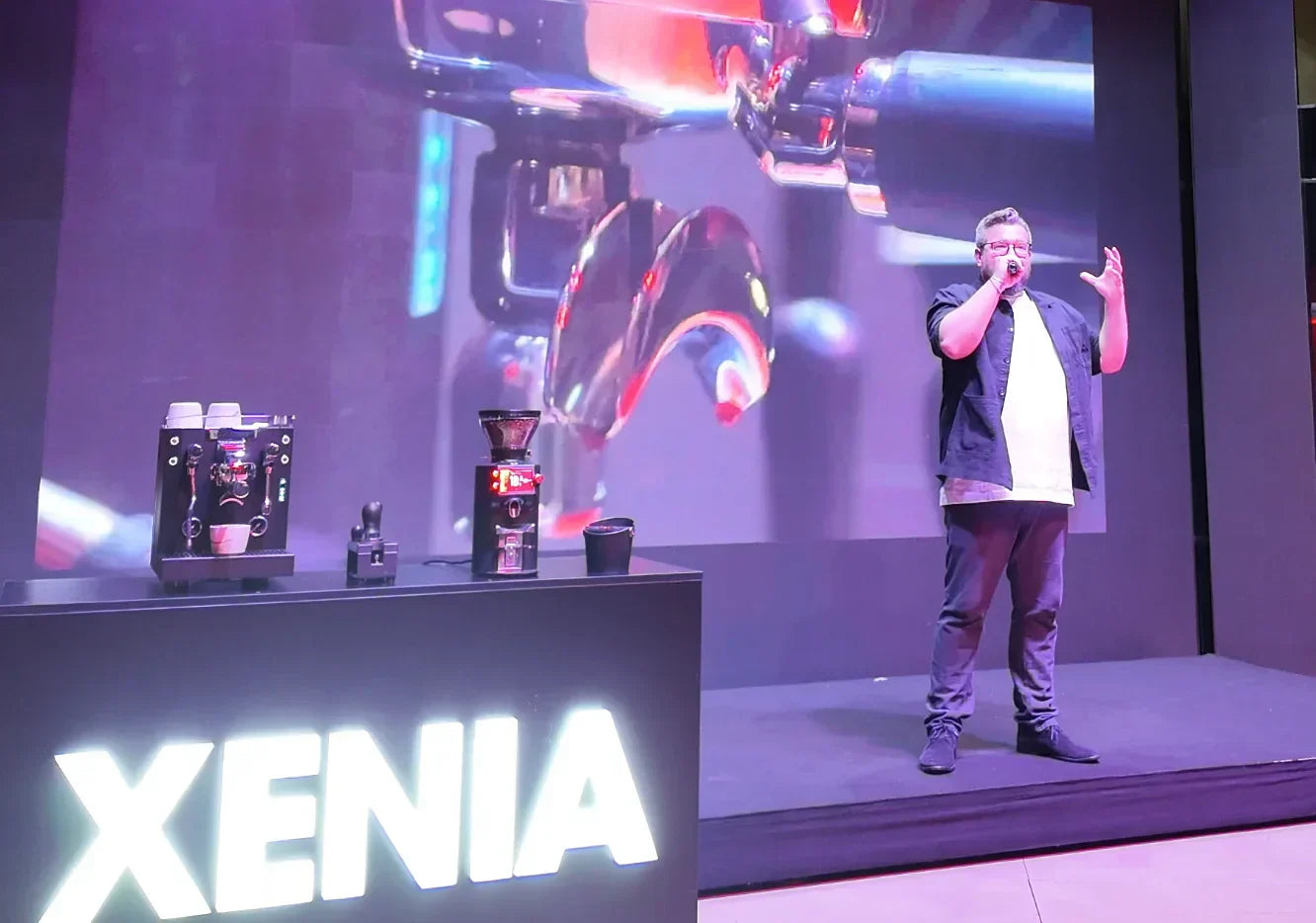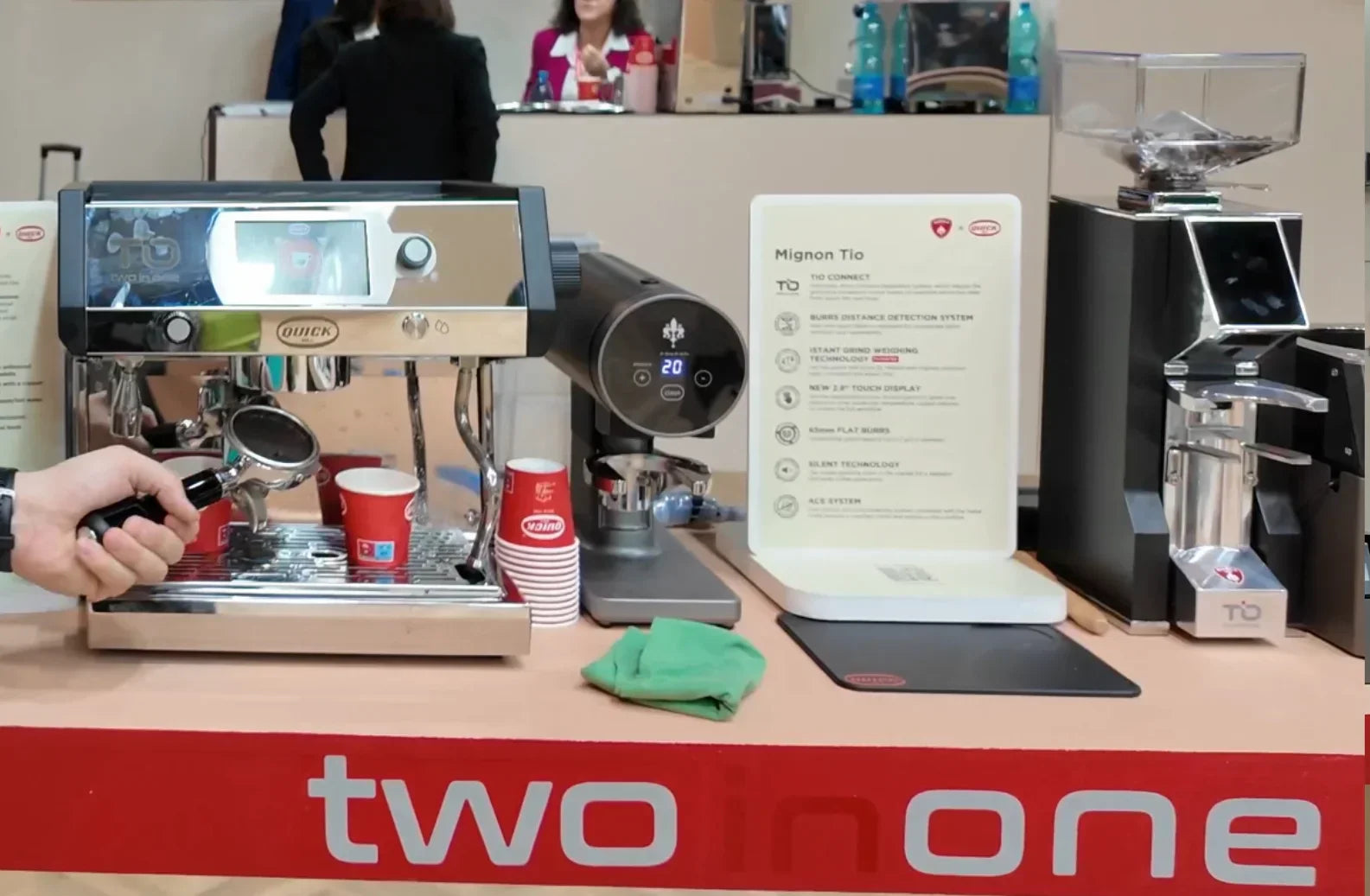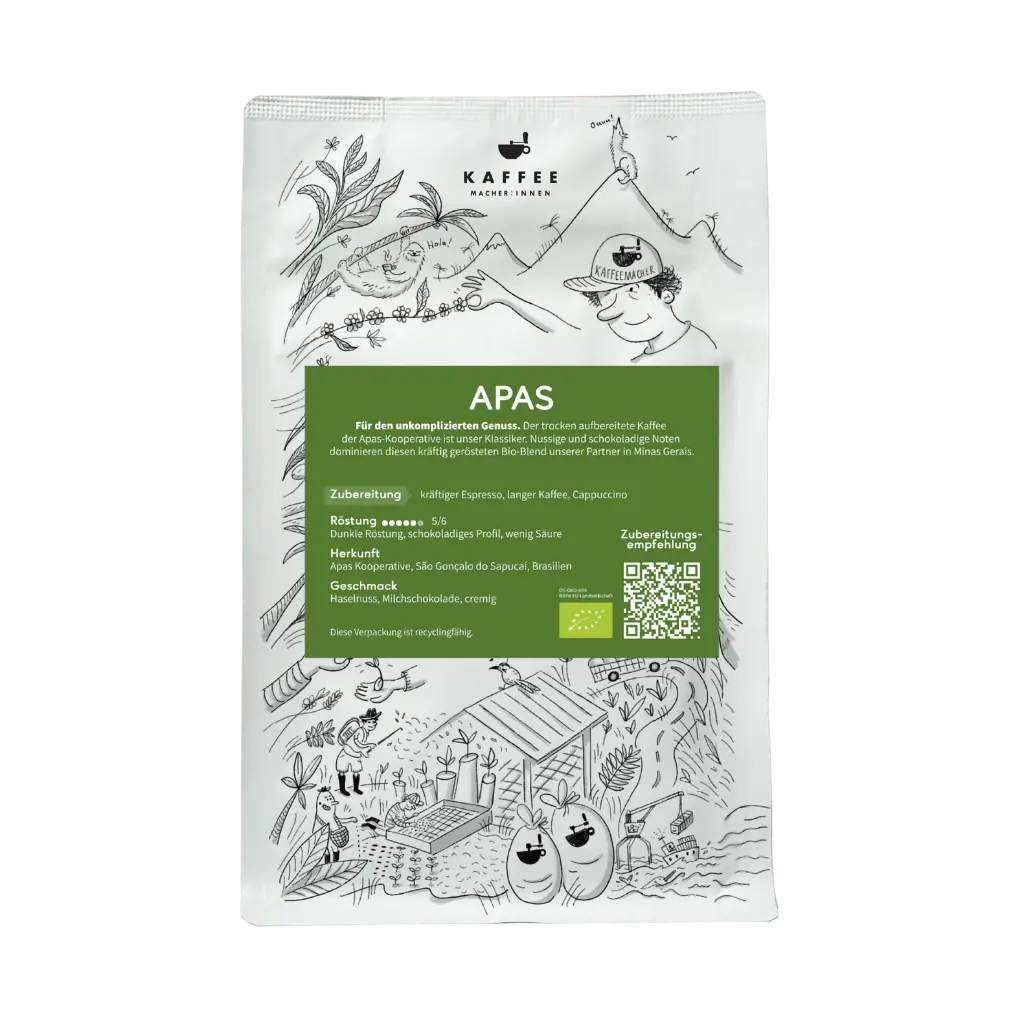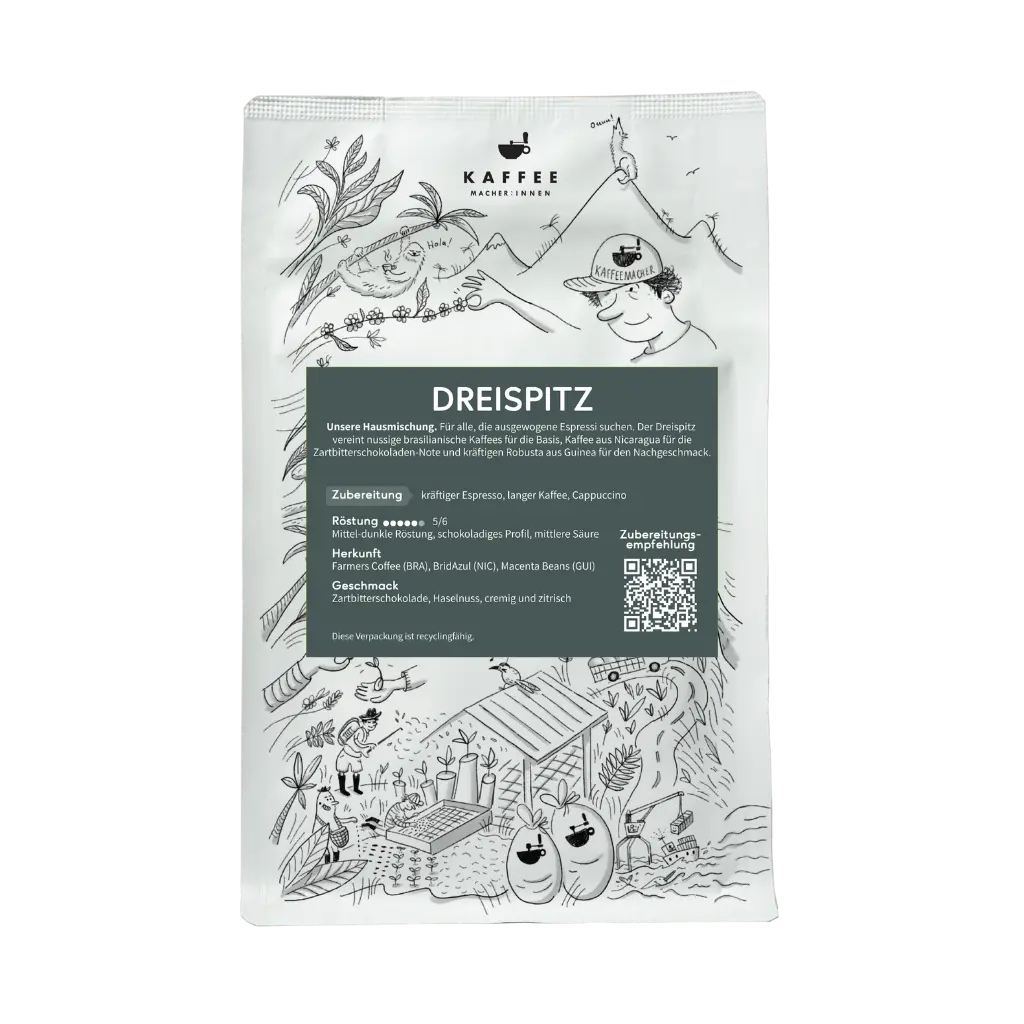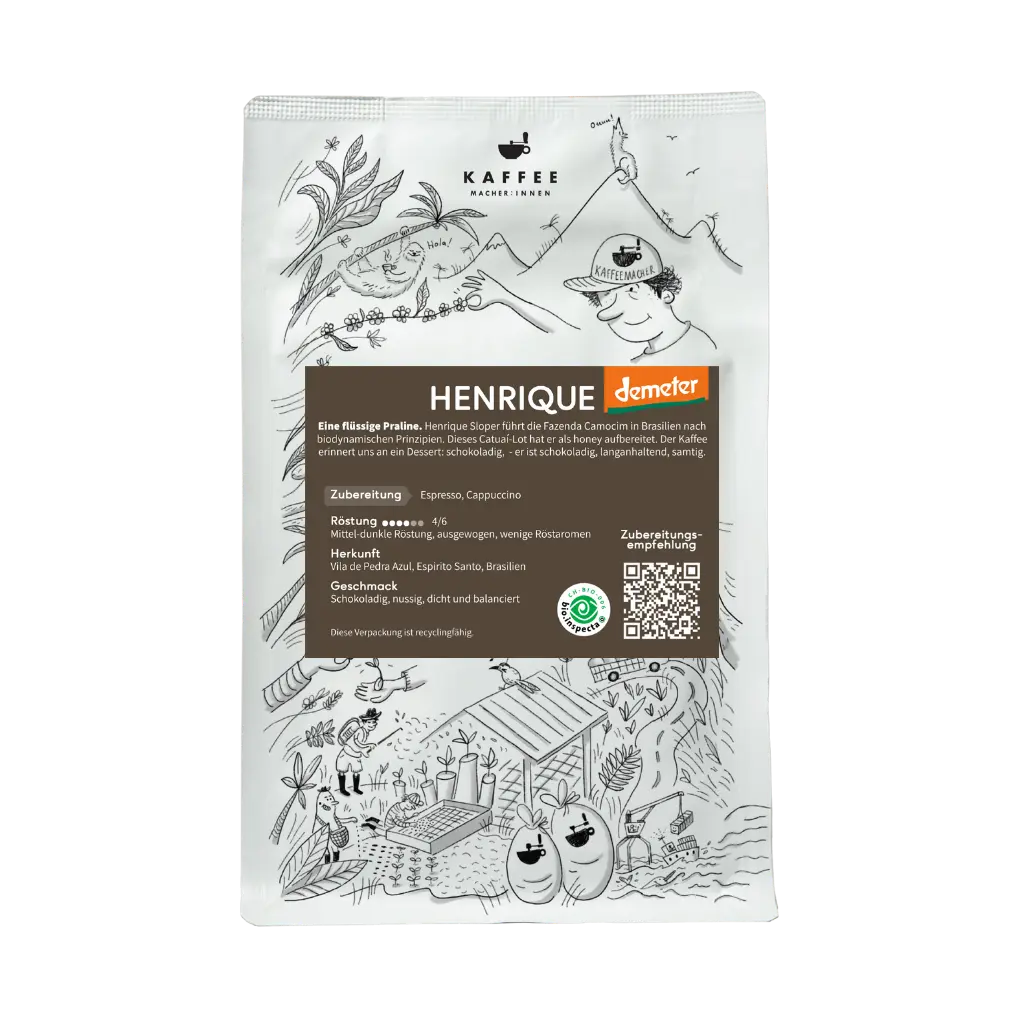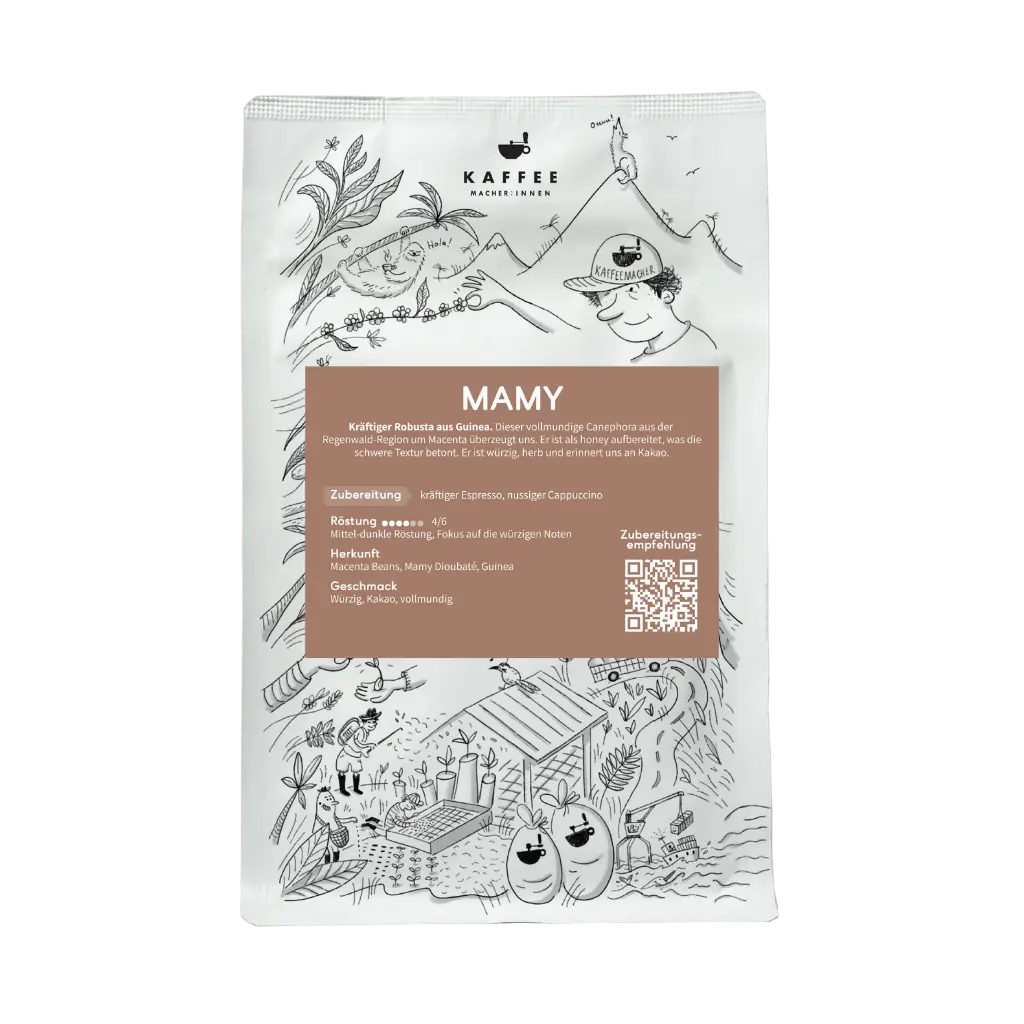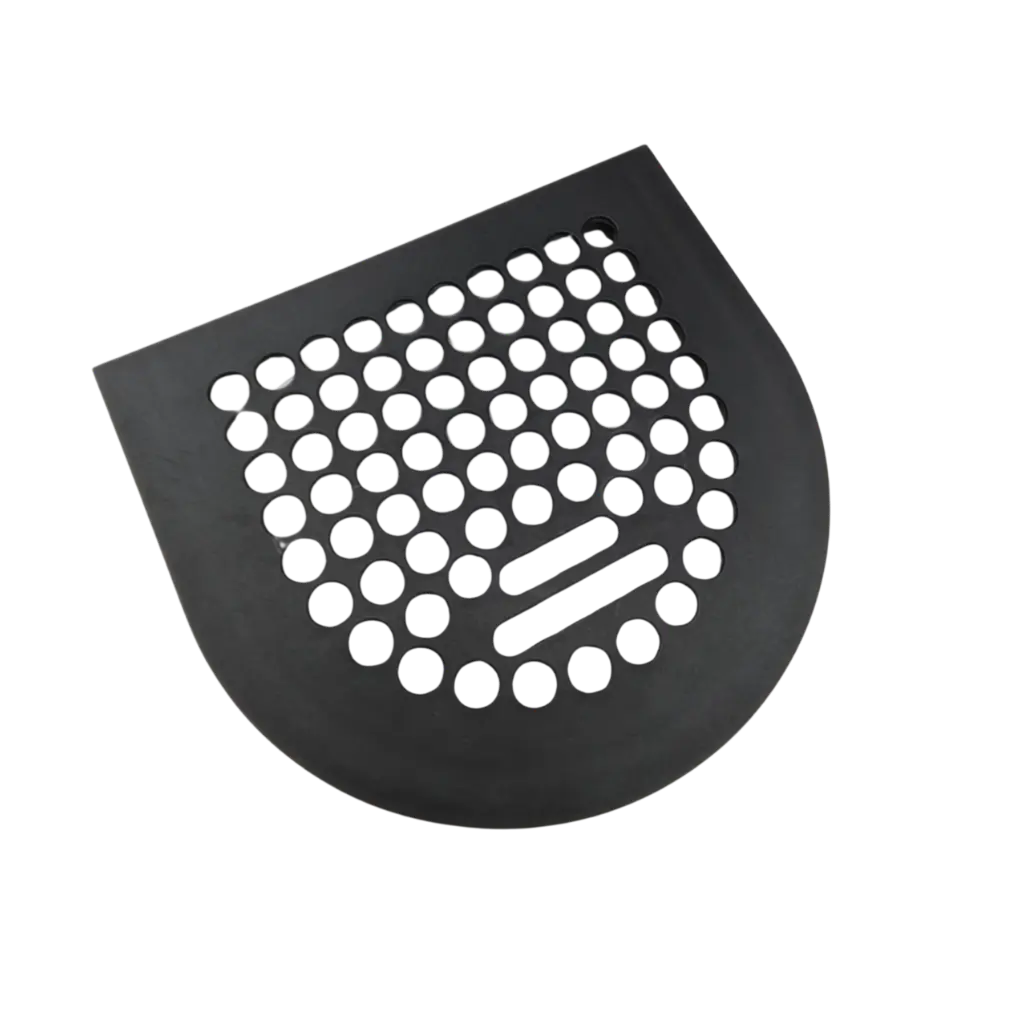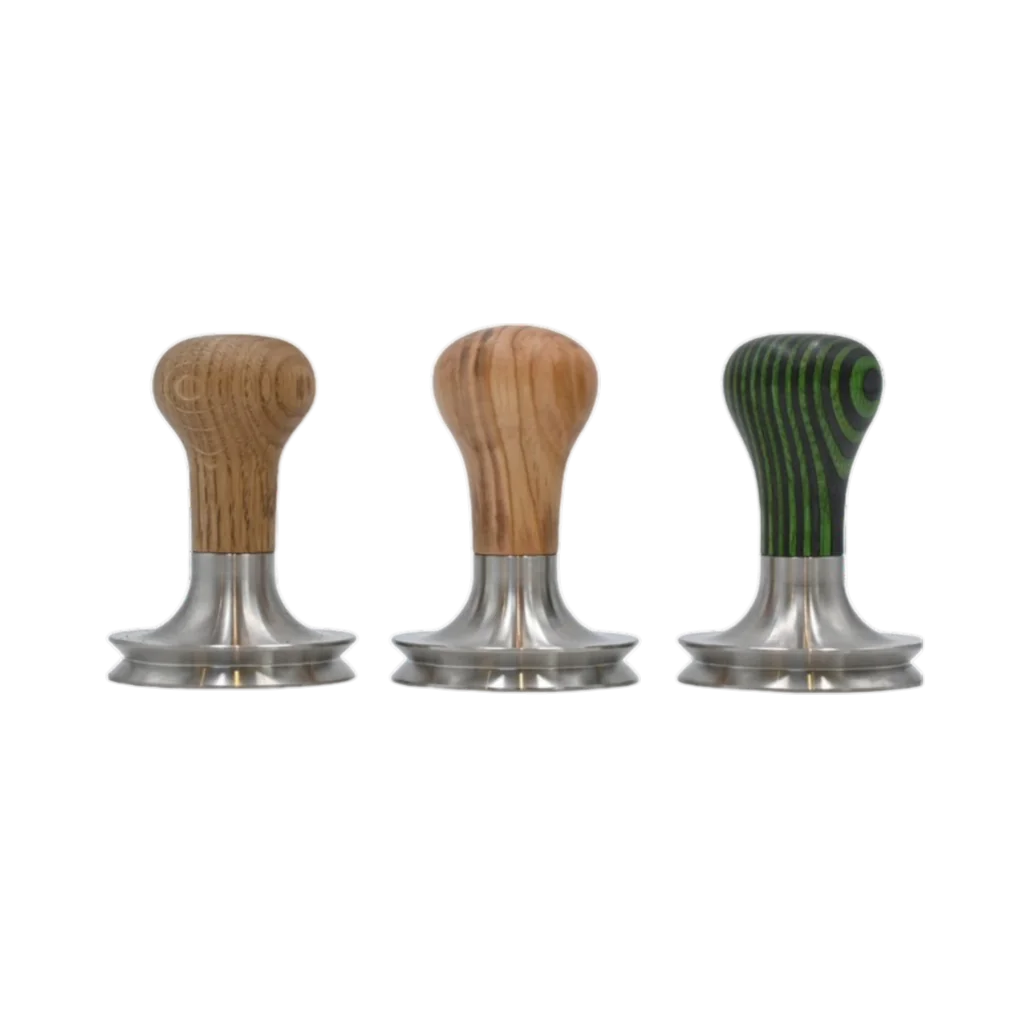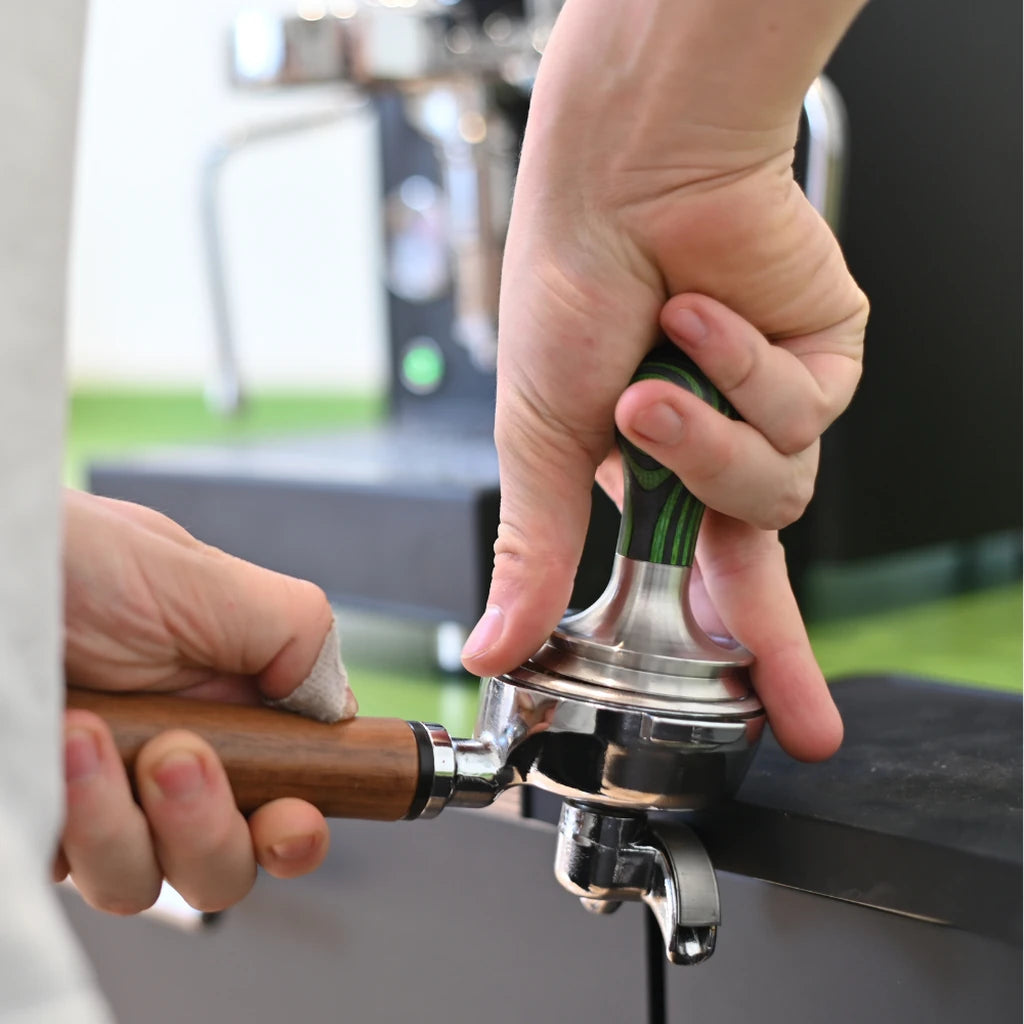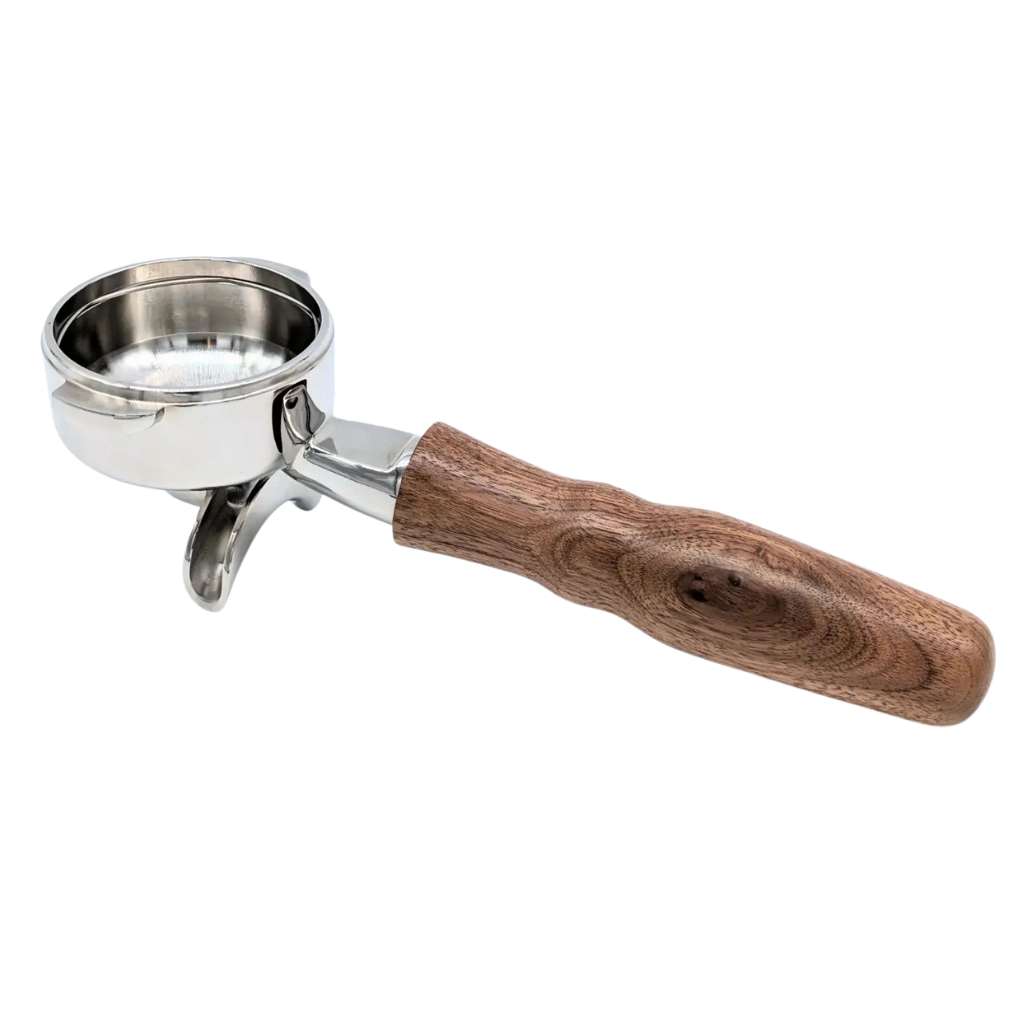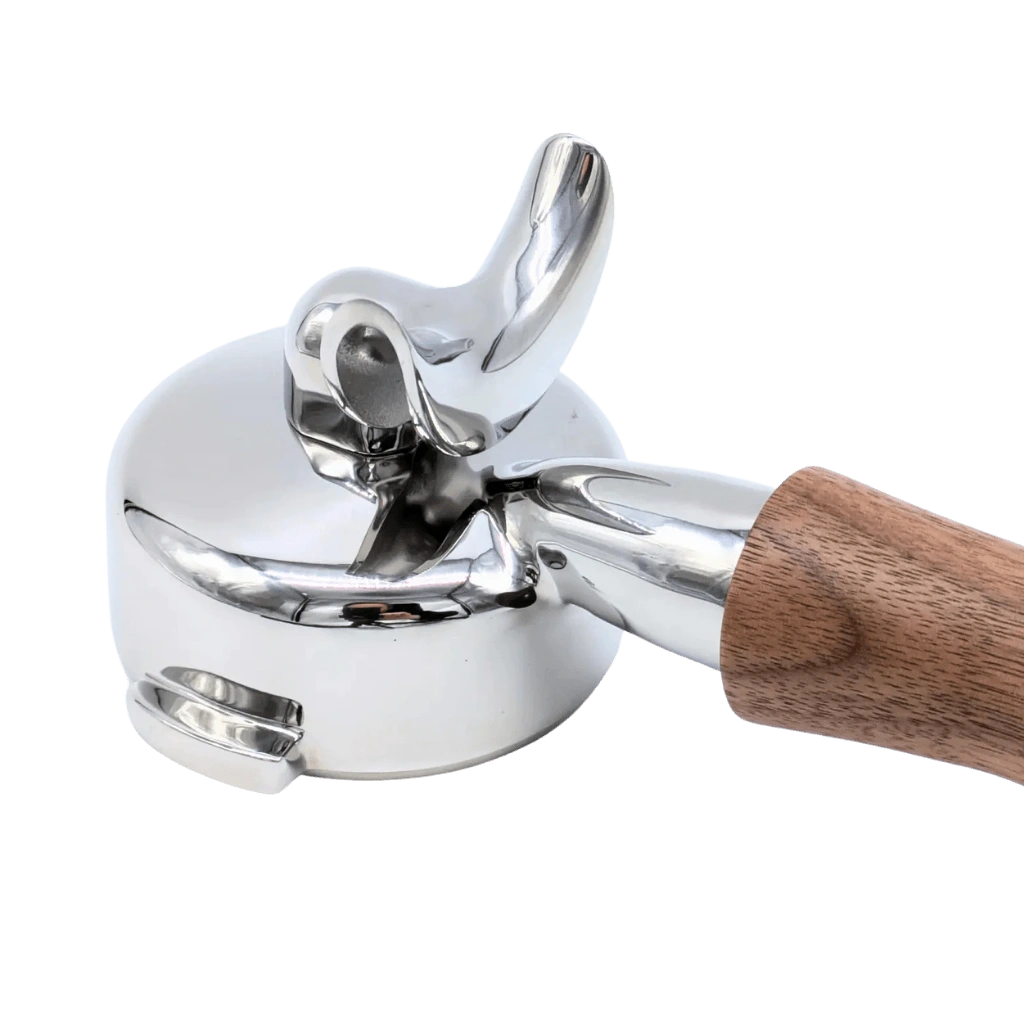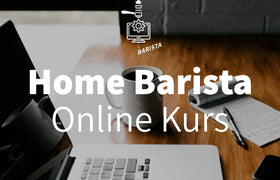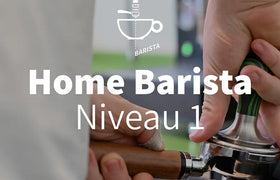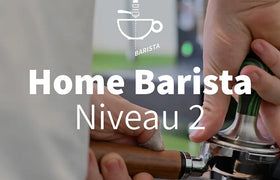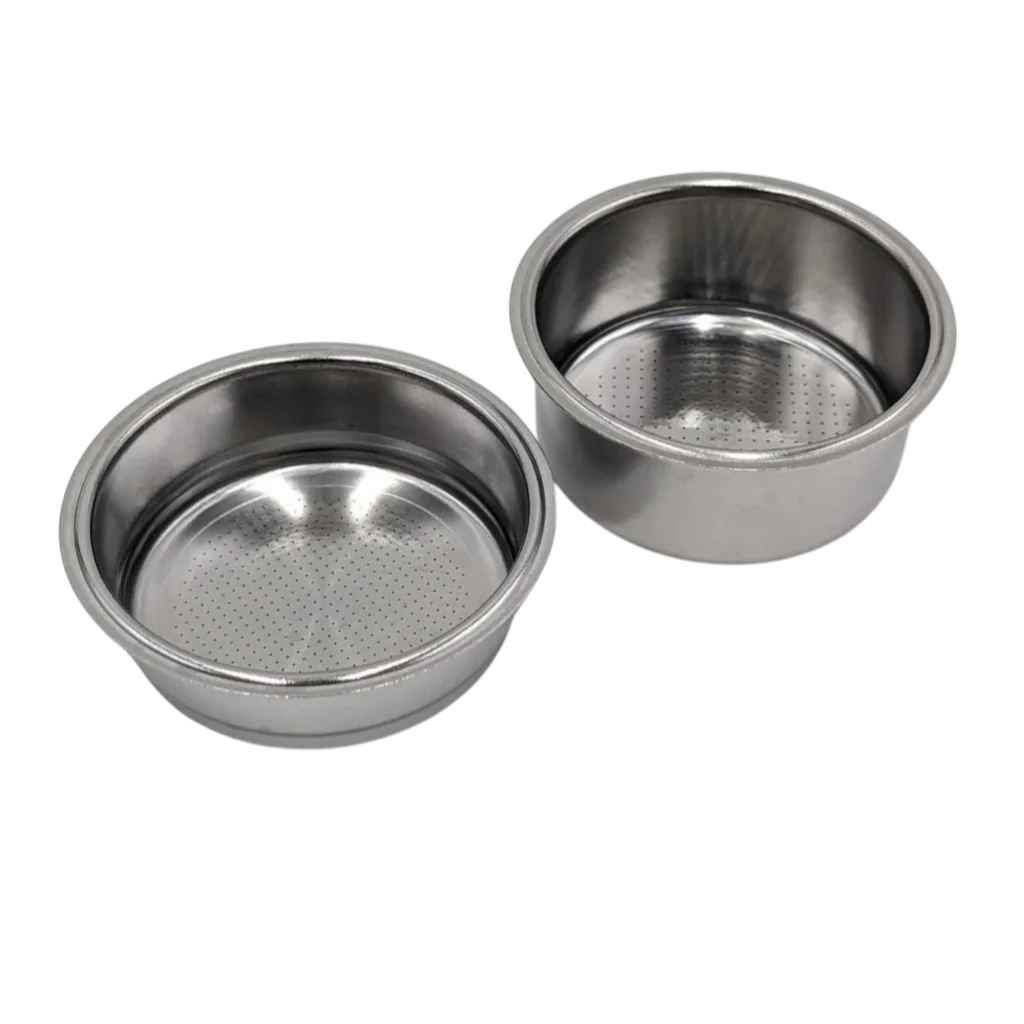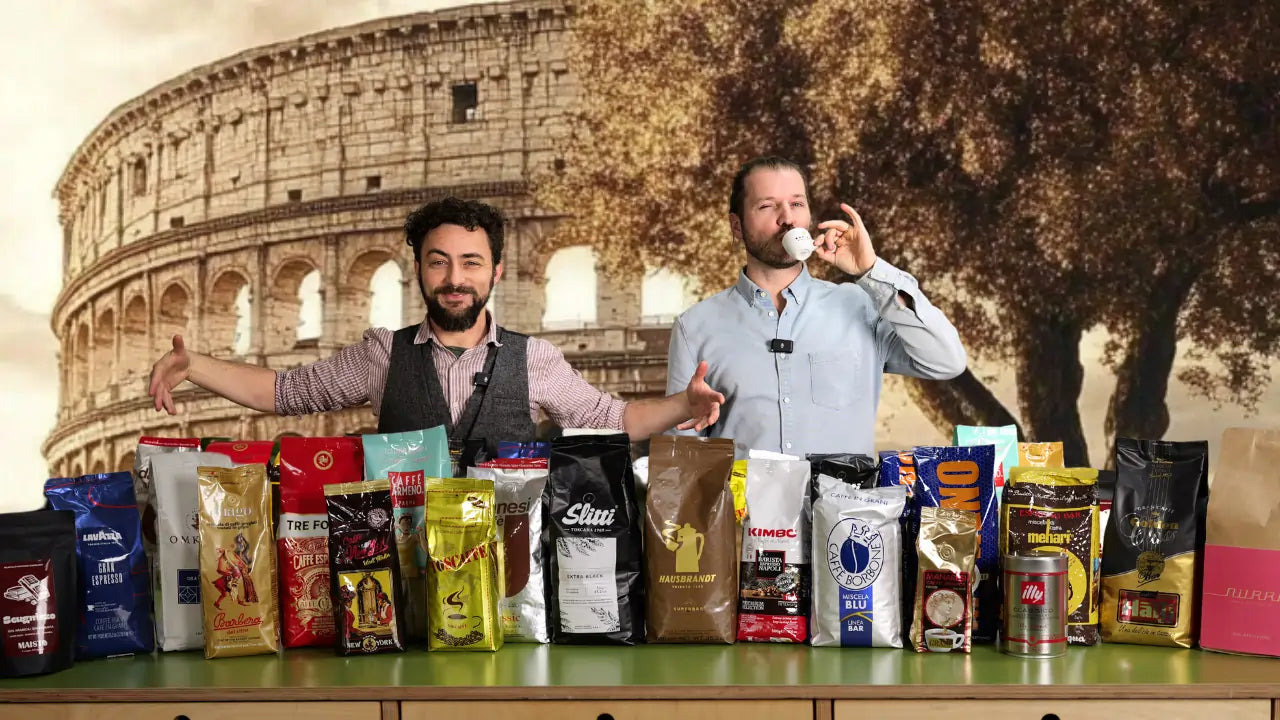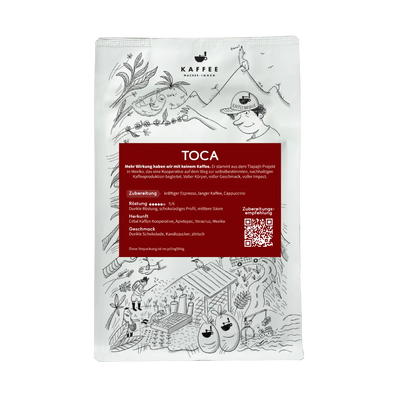For many coffee drinkers, "the real Italian espresso" is the benchmark. But what does this coffee taste like? How is it prepared? And which beans are used? We've tasted your 20 favorites. Three coffees stand out from the crowd.
We often hear in barista courses that the coffee gets better the more south someone travels. Those who drive through the Gotthard Tunnel or over the Brenner Pass are treated to a "really good espresso" on the other side.
Is that really so?
It is quite possible that the anticipation, the holiday feeling, the sight of the machine and well-known bean brands all play a role in the moment, so that the espresso is perceived differently than if it were made at home.
Or, the ratio of the amount of coffee powder used to the amount extracted in the cup differs significantly from what is common north of the Alps.
So in our big test we wanted to clarify two main questions:
- Which coffees does our community identify as good Italian espresso?
- and how exactly should it be prepared?
Regarding the first point, we asked you in September 2024 which coffees we should taste. Over 2,000 votes were cast. We sourced the top 17 with the help of Philipp von Vettore, and we had three more coffees selected by Italian coffee connoisseurs: Philipp Vettore himself, Giovanni Meola, and Antonio Nurri. Regarding the second point, preparation: in our first video on Italian espresso in 2019, we prepared the coffees on a Nuova Simonelli Black Eagle. Our standard recipe of 18g in and 45g out at a brewing temperature of 93°C wouldn't have served all coffees, according to the tenor of the comments.
So we invited Antonio Nurri, who traveled to Basel with his own machine ( Nurri Leva ). Antonio is a coffee roaster in Naples and develops his own coffee machines, which have already achieved cult status for many.

Antonio was assisted by Gianni Marzinotto, who successfully competed in the 2023 Home Barista Championship organized by us. Together, Antonio and Gianni developed individual recipes for all the test coffees and prepared them on the Nurri Leva.
Tasting criteria and test procedure
extraction
- Individual recipes from Antonio and Gianni on the Nurri Leva
- The test was conducted double-blind: Damian from the roastery team coded the original bags and then recoded the test bags. Neither Antonio and Gianni nor Benjamin and Philipp knew which coffee was being tasted.
Sensory evaluation - decisive for the table
In evaluating the overall taste impression, we distinguish between different criteria
Good/bad bitterness
There are different types of bitterness. Some are pleasant, others can be irritating. We evaluate them based on intensity and quality. Learn more about bitterness in coffee in this article and video.
Sweet-acid balance
Here, we examined the coffee for its sweetness-to-acidity ratio. The perceived sweetness in a coffee supports the acidity—the more sweetness we perceive, the more pleasant the acidity becomes.
Heaviness and texture
The heaviness of the coffee is less than half the battle: we can always brew coffees to be as heavy as possible, but this may come at the expense of texture:
Texture – here we analyze the so-called mouthfeel, i.e., how the coffee spreads on the tongue. If the coffee is silky, creamy, watery, velvety, etc., we reward it with a high score. If the coffee is rough, dusty, chalky, or floury, we deduct points.
Aroma spectrum
Here we describe the variety of flavors. While the coffee is chocolatey, it veers slightly toward nutty or even slightly fruity notes.
Assessment of physical bean quality
The assessment of physical bean quality had no direct influence on the final ranking. However, we indirectly rated coffees with a poorer bean appearance lower, because physical bean defects can have a marginal to strong influence on the sensory assessment.
fracture
Does the coffee consist of many broken beans, or are there none at all? Broken green coffee beans burn during roasting and can impart strong burnt notes to the coffee.

A mixed bean quality with broken pieces, hulls, craters from hot roasting and lots of oil
Oiliness
How oily is the coffee? The more coffee oil appears on the surface, the faster the coffee can become rancid.
Assessment of transparency
Like the physical bean quality, we did not include transparency and sustainability in the sensory ranking, but we examine and evaluate each coffee based on this in the individual analysis below.
Roasting date
Is the roasting date known?
Information on green coffee
Which green coffees are used and in what ratio?
Traceability
Does anyone limit themselves to the minimum "Arabica/Robusta" label? Who lists the countries of origin or describes exactly where the coffees come from?
Certifications
Does the coffee have certifications or not?

In search of transparency
The results: best Italian espresso
We tasted all the coffees in one day. In the end, we tasted 19 instead of 20, as one package didn't arrive on time. Antonio and Gianni created individual recipes, and Benjamin and I tasted the coffees.
We observed significant differences in the quality of the green coffee, as well as in the intensity of the roast. Some coffees fit the very broad definition of espresso italiano very well. Other coffees surprised us because we wouldn't have classified them as "classic Italian espresso."
This table shows the overall winners. Below is an analysis of the individual coffees.
The winner: Illy Classico

Sensor technology:
Floral notes in the aroma give the coffee character. Light to medium body, silky texture. Citrusy, delicate acidity. Balanced, with caramel notes on the finish.
Bean quality: relatively uniform, some breakage
Recipe: in: 18.1g, out per cup: 14.7g, ratio: 1:1.62, time: 34sec
Oiliness of the beans: 2/5
Roasting date: yes
Green coffee information: no, only: 100% Arabica
Traceability: no
Certifications: no
Runner-up: Manaresi

Sensor technology:
A very smooth texture with a perfect balance of sweetness and acidity. A wide range of flavors, from intense hazelnut, macadamias, and licorice to dried fruit and tobacco. A pleasant aftertaste and a medium roast.
Bean quality: mostly uniform size, little breakage, good
Recipe: in: 18g, out per cup: 17g, ratio: 1:1.89, 20sec
Oiliness of the beans: 1.5/5
Roasting date: no
Green coffee information: no, only 100% Arabica
Traceability: no
Certifications: no
Third place: Omkafè Diamante

Sensor technology:
Oily texture, dense body. Plenty of nougat, dark chocolate, a full spectrum of brown sugar, a touch of fruit (stone fruit), a long aftertaste with a medium-dark roast and medium acidity.
Bean quality: very good bean appearance
Recipe: in:18g, out per cup: 15.6g, ratio: 1:1.73, time: 34sec
Oiliness of the beans: 1/5
Roasting date: no
Green coffee information: only ratio: 92% Arabica, 8% Robusta
Traceability: no
Certifications: no
Slitti Extra Black - the Robusta-heavy one

Sensor technology:
A very dark roast with a pleasant, soft bitterness. A dense body and creamy texture. Notes of cocoa, caramel, and plenty of wood in the aftertaste, with a caramel-like sweetness. A slightly lingering aftertaste.
Bean quality: Oiliness of the beans: 1.5/5
Recipe: in: 18.1g, out per cup: 15.8g, ratio: 1:1.75, time: 33sec
Roasting date: yes
Green coffee information: only ratio: 35% Arabica, 65% Robusta
Traceability: no
Certifications: no
Caffè Moreno - like a line

Sensor technology:
Very dark roast with tobacco and woody notes. Heavy body. Little complexity, high bitterness, and low acidity.
Bean quality: above-average amount of broca and breakage
Oiliness of the beans: 4/5
Recipe: in: 18.1g, out per cup: 16g, ratio: 1:1.77, time: 20sec
Roasting date: no
Indication of green coffee: no
Traceability: no
Certifications: no
Nurri 100% Napoletano - from the South

Sensor technology:
A rich creaminess with a dense texture. Notes of dark chocolate, caramel, and cashew nuts. A very long, sweet aftertaste with a pleasant, soft bitterness.
Bean quality: relatively uniform bean appearance, some breakage
Oiliness of the beans: 2/5
Recipe: in: 18g, out per cup: 19g, ratio: 1:2.1, time: 33sec
Roasting date: yes
Indication of green coffee: no
Traceability: no
Certifications: no
Lavazza Gran Espresso - the top dog

Sensor technology:
Medium-bodied, rather thin texture. Balanced in sweetness and acidity. The aftertaste is simple with a positive bitterness. Few distinctive notes, plenty of roasted almonds. Somewhat "ordinary."
Bean quality: relatively uniform, a few crushed beans
Oiliness of the beans: 3/5
Recipe: in: 18.2g, out per cup: 18.9g, ratio: 1:2.08, time: 20sec
Roasting date: no
Indication of green coffee: no
Traceability: no
Certifications: no
New York Extra - hot stuff

Sensor technology:
Roasted almonds, cocoa, and woody notes. A strong bitterness with a long aftertaste and stand-alone acidity. Medium body and a somewhat hollow texture.
Bean quality : Broken beans and some craters from hot roasting
Oiliness of the beans: 2.5/5
Recipe: in: 18.1g, out per cup: 17g, ratio: 1:1.88, time: 26sec
Roasting date : no
Indication of green coffee : no
Traceability : no
Certifications : no
Hausbrandt Superbar - strong and dark

Sensor technology:
A "strong coffee" – very dark, with a slightly sharp aftertaste. Creamy body, dominated by very dark sugars. Bitterness soft at first, then harsh.
Bean quality : relatively uniform, some Quaker
Oiliness of the beans: 3/5
Recipe: in: 18.2g, out per cup: 16.1g, ratio: 1:1.77, time: 27sec
Roasting date : no
Indication of green coffee: no
Traceability : no
Certifications : no
Haiti Golden Class - Old, old school from Rome

Sensor technology:
Medium-bodied with a hollow texture. Acidity dominates, while dark flavors dominate. Malty and dark caramel notes. The aftertaste is slightly burnt, with a chalky bitterness dominating the finish.
Bean quality : relatively uniform, some quaker and breakage
Oiliness of the beans: 2/5
Recipe: in: 18.1g, out per cup: 20g, ratio: 1:2.21, time: 25sec
Roasting date: yes
Indication of green coffee: no
Traceability: no
Certifications: no
Mago Barbera - no balance

Sensor technology:
Plenty of texture with medium acidity. Notes of tobacco and strong roast, with a hint of nougat. The acidity doesn't balance the coffee. The oxidized note, combined with the intense roast, gives the coffee a rancid aftertaste.
Bean quality : relatively much broken and crushed beans
Oiliness of the beans : 2/5
Recipe: in: 18.1g, out per cup: 16.2g, ratio: 1:1.79, time: 26sec
Roasting date : yes
Indication of green coffee: no
Traceability : no
Certifications : no
Maisto Scugnizzo - dark, oily, is this the South?

Sensor technology:
A "strong, Italian coffee." Very heavy, dark roast. A hint of molasses. Very bitter due to the dark roast. A bit salty (Robusta quality?) in the aftertaste.
Bean quality: partly brittle beans due to dark roasting
Oiliness of the beans: 5/5
Recipe: in: 18.3g, out per cup: 13.3g, ratio: 1:1.45, time: 28sec
Roasting date : yes - but only month
Green coffee information: only 65% Arabica, 35% Robusta on the packaging, but precise on the product sheet
Traceability : included in the product sheet: list of green coffees
Certifications : no
Danesi Classic – is classic good?

Sensor technology:
Very dark roast with high bitterness. Notes of ash, wood, and molasses. No acidity. Heavy body, hollow texture. Sweet-bitter aftertaste.
Bean quality: many brittle beans due to the dark roasting
Oiliness of the beans : 2/5
Recipe: in: 18.3g, out per cup: 16g, ratio: 1:1.75, time: 25sec
Roasting date : no
Indication of green coffee : no
Traceability : no
Certifications : no
Toscaffè Oro

Sensor technology:
High intensity of Robusta flavor. Acidity not well defined. Medium body, medium texture, long aftertaste with high bitterness. Slightly salty.
Bean quality : some Quaker
Oiliness of the beans: 2/5
Recipe: in: 18.1g, out per cup: 14.8g, ratio: 1:1.64, time: 28sec
Roasting date : no
Indication of green coffee: no
Traceability : no
Certifications : no
Three Forces

Sensor technology:
Dark nougat, dark nuts. A heavy, creamy body with a poorly defined texture. High bitterness that lingers in the aftertaste. Barely any acidity.
Bean quality : relatively uniform, some breakage
Oiliness of the beans : 2.5/5
Recipe : in: 18.2g, out per cup: 16.3g, ratio: 1:1.8, time: 24sec
Roasting date : no
Indication of green coffee : no
Traceability : no
Certifications : no
Kimbo Napoletano - a lot of everything

Sensor technology :
A dark roast that emphasizes dark sugars. Dark wood in the aftertaste. Roastiness dominates, acidity doesn't help balance. The aftertaste is lingeringly bitter, rather harsh and metallic, with little sweetness.
Bean quality : relatively high amount of broca and breakage
Oiliness of the beans : 5/5
Recipe :vin: 18.2g, out per cup: 14.5g, ratio: 1:1.6, time: 28sec
Roasting date : yes
Indication of green coffee: no
Traceability : no
Certifications : no
Passalacqua Mehari

Sensor technology :
Almost foamy body. Very dark roasted notes, ash, coal, no sweetness. The aftertaste is dominated by a harsh, chalky bitterness.
Bean quality : Broken beans and some broca as well as green coffee hulls
Oiliness of the beans : 5/5
Recipe : in: 18g, out per cup: 13.5g, ratio: 1:1.5, time: 28sec
Roasting date : no
Indication of green coffee : no
Traceability : no
Certifications : no
Borbone Miscela Blu

Sensor technology :
"Straightforward" coffee, high gravity, plenty of body, somewhat hollow texture. Limited aroma, hardly any acidity, simple.
Bean quality : relatively uniform bean appearance
Oiliness of the beans : 4/5
Recipe: in: 17.9g, out per cup: 15.3g, ratio: 1:1.7, time: 26sec
Roasting date : yes - but only month
Indication of green coffee: no
Traceability : no
Certifications : no
Caffè Armeno Penelope

Sensor technology :
“A coffee like a line—no left, no right.” Hardly any heaviness. No acidity. Plenty of bitterness, a bit grainy. Astringent aftertaste, unpleasant bitterness.
Bean quality : relatively high broca content, craters due to very hot roasting
Recipe : in: 18g, out per cup: 15.6g, ratio: 1:1.73, time: 32sec
Oiliness of the beans : 3/5
Roasting date : no
Indication of green coffee : no
Traceability : no
Certifications : no
What is a classic Italian espresso?
There's no clear answer to that. Our survey selected coffees that we then blind-tasted and, in that setting, found to be anything but "classic Italian." Strong coffees, darker roasts, full-bodied, sometimes with a higher Robusta content and low acidity—we often hear these descriptions.
But the coffees from Manaresi (ranked 2) and Omkafè (ranked 3) in particular don't fit this definition. They exhibited a distinct acidity, the roasts were medium-dark, and if Robusta was present in the blend, we couldn't taste it.
One coffee that we called a “congruent Italian espresso,” that is, a coffee where the vague notion of the category seemed to be compatible with the product in the cup, was the Hausbrandt espresso.

In tasting mode
Italian espresso: dark, darker, darkest?
Not at all. We tasted a whole range of roasts: medium roasts from the top three, as well as medium-dark roasts from Caffè Armeno, Lavazza, Treforze, and Nurri, all the way to the very dark coffees from Maisto, Moreno, and Passalacqua.
Here, too, it becomes clear: there is no uniform degree of roasting for what is considered a classic Italian espresso.

In addition to oily-dark beans, we also tasted medium roasts
Italian Espresso: Robusta Bombs?
Partly. We had coffees that displayed floral notes (Illy), others that claimed to be 100% Arabica, and others that used high-quality Robusta beans. Some roasters placed Robusta at the center (Slitti), thus emphasizing the heaviness and woodiness.
Freshness - Consumers are in the dark
What's standard for specialty roasters apparently doesn't apply to many Italian roasters: only six out of 20 roasters specified the roasting date precisely: Slitti, Kimbo, Illy, Nurri, Haiti, and Mago. Two roasters, at least, specified the month: Maisto and Borbone.
Twelve of the 20 roasteries leave consumers in the dark. It's quite possible that you'll be getting coffee that's already a year old, or even longer.
Arabica-Robusta ratio - little information
Here, too, we were amazed by the brand's self-confidence, which seemingly trumps transparency. Only three roasters note on their packaging that they use "100% Arabica" coffees: Illy, Manaresi, and Slitti.
If we were to use this information for wine, it would be as precise as: 100% wine made from red grapes. There's no way to go better than that. Only three roasters break down the proportions of Arabica and Robusta in their blends on the packaging: Omkafè, Maisto, and Slitti.
Not a single roaster communicates on the packaging about the actual origin of the beans used.
A third describe them as “the best beans from the best growing regions in the world” – thus placing these roasters in the marketing jargon of the largest supermarket roasters.
Transparency and sustainability. Far from it
Even though seals don't provide complete assurance that the coffee used was produced sustainably, they guarantee a minimum standard—one that all 20 roasters ignore.
None of the tested roasters use certifications (Fair Trade, Organic, Rainforest, etc.), or at least don't list them on the packaging. Furthermore, all roasters refrain from providing precise information about the coffees they use. This eliminates the question of where the coffee actually comes from. Only Maisto provides the ingredients of the blend in the package insert.
The data mentioned is superficial, as traders would call the coffees, which gives you an idea of where the coffee comes from, but not exactly who. Even if that's not much by a 2024 scale, it's a lot in this panel, and it's commendable.
Almost all of the espressos tested in this panel, from small and large roasters, rely exclusively on their brand strength as a guarantee of good work.
This is astonishingly anachronistic in 2024 and shows how much catching up there is.
We would like to see roasters become much more aware of sustainability issues and communicate them more effectively.
Conclusion
We tasted a limited selection of Italian coffees, but clearly saw that there is hardly any internal coherence within a separate category. We also know that the Italian coffee world extends beyond the 20 espressos we tasted.
Large roasters scored very good to good in our test. This is a testament to the fact that these companies invest heavily in the consistent quality of their green coffee, that quality controls are standardized, and that consistency may be more important than history.
Smaller roasters often receive some advance praise and thrive on the charm inherent in smaller businesses. However, this charm isn't apparent in a blind tasting. That's where the quality wheat separates from the chaff. We had coffees from smaller roasters that selected very high-quality green coffee and roasted them precisely. We also had coffees from smaller (and larger) roasters that selected medium-quality green coffee and roasted them either very quickly or at very high temperatures, so that in some cases, only the roasted notes dominated.
Sugar
We tried all the coffees without sugar, because sugar can be deceptive as to the quality of the coffee. As long as a coffee is enjoyable with only sugar, then the feeling and brand loyalty clearly outweigh pure sensory analysis.
We were surprised by how little transparency and sustainability play a role in the coffees we selected. Many supermarkets are more transparent in this regard by listing the roast date on the packaging. The roast date is a no-brainer , regardless of the type of coffee. We didn't have any coffee that was advertised with a certification—at least not on the packaging.
"Italian espresso" also consists of coffee beans. And all roasters face the same challenges in the coffee industry . We would like to see more transparency and accountable, accountable responsibility throughout the coffee chain.
30 espressos next time?
The 19 espressos we tasted provided a snapshot of what is consumed and appreciated as Italian espresso. We remain interested and open to gaining a holistic view—however diverse that may be—of Italian espresso.
So if you're missing a coffee from the list, feel free to let us know in the comments what we should taste next time. And maybe in a few years there will be 30 instead of 20.
